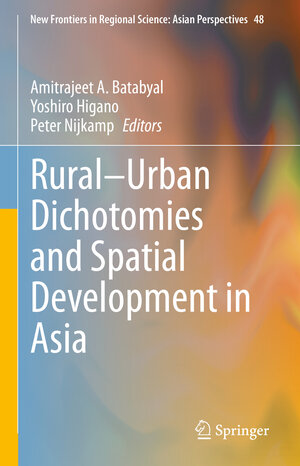
Rural–Urban Dichotomies and Spatial Development in Asia
herausgegeben von Amitrajeet A. Batabyal, Yoshiro Higano und Peter NijkampThis edited book brings together in one place new studies of rural–urban interactions and their implications for regional growth and development in different regions within Asia. Specifically, the individual chapters in the book shed light on the different kinds of rural–urban interactions that we witness in Asian regions, particularly those that are based on migration, poverty, inequality, education, economic dependence, and the flow of goods and services. The book departs from the existing literature in three ways. First, it explicitly recognizes that different kinds of rural–urban interactions have dissimilar impacts on the lives and hence on the welfare of the residents of rural and urban regions. Second, the book emphasizes the varied spatial and temporal dimensions of the interactions and the ways in which these dimensions influence rural and urban societies. Third, this book demonstrates the ways in which an understanding of the preceding two points contributes to our knowledge about economic growth and development. Because Asia is the fastest-growing and most dynamic continent in the world today, the research delineated in the individual chapters of the book provides practical guidance concerning two salient questions. First, how do we effectively address the economic development challenges stemming from the interactions between alternate rural and urban regions within Asia? Second, how do we ensure that the policies we design to address these challenges give rise to broad-based economic growth and development that is sustainable?



